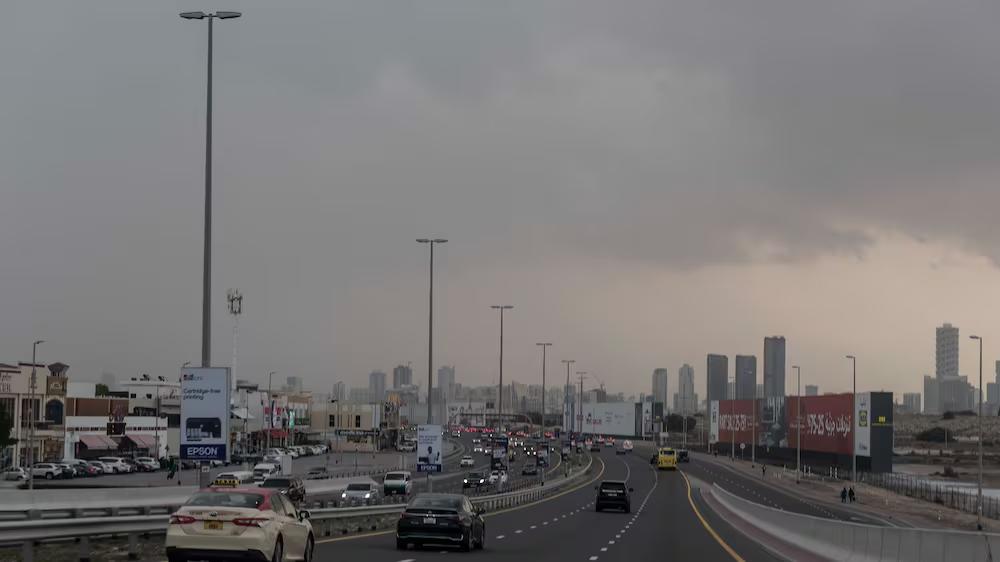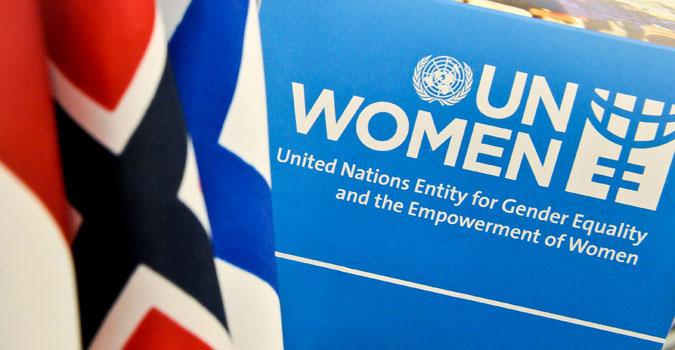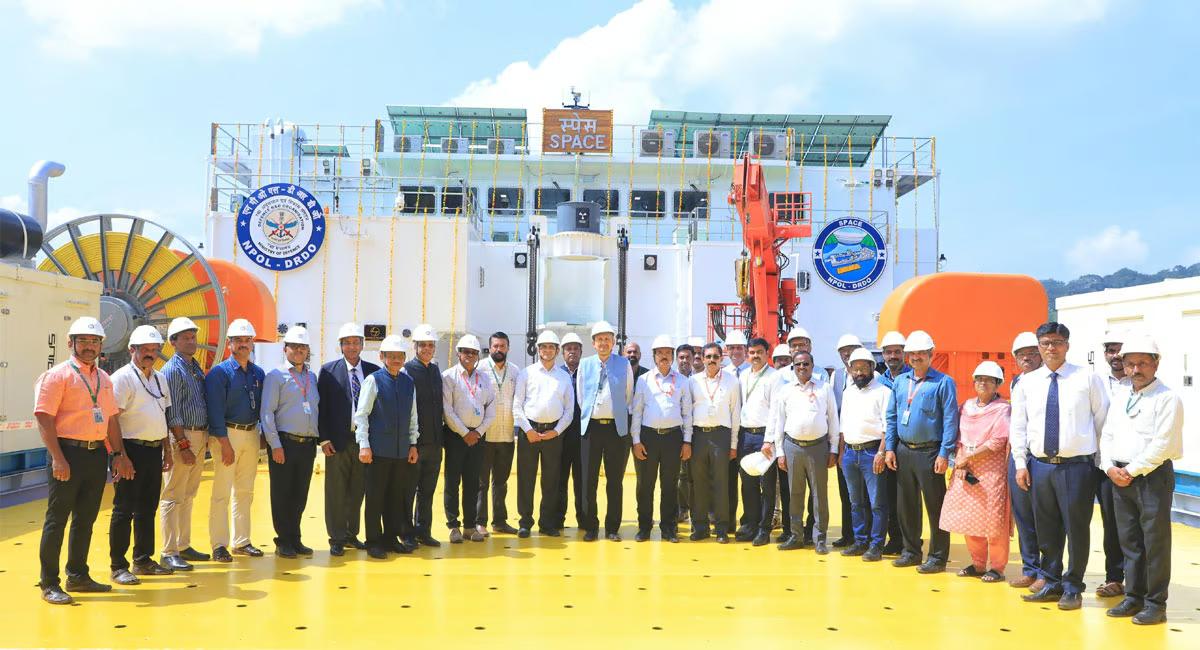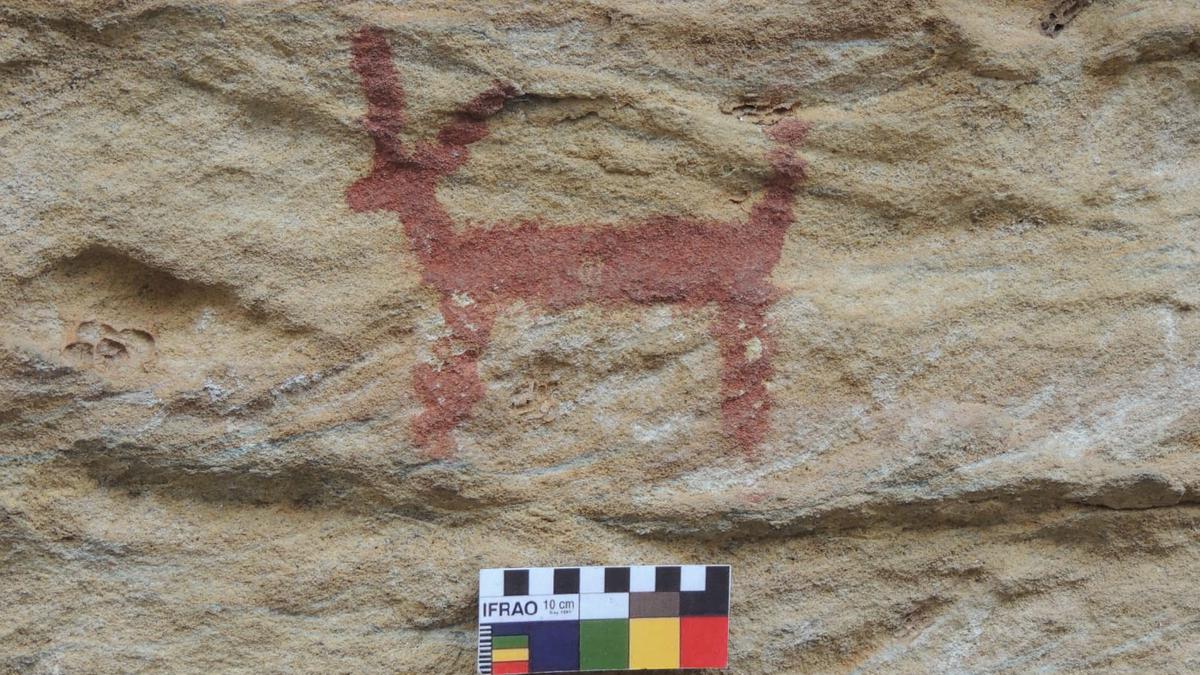Cloud Seeding

- 18 Apr 2024
Why is it in the News?
The UAE recorded the heaviest rain ever after a severe thunderstorm hit the country on April 15, killing at least one person, causing damage to homes and businesses, and bringing air travel to a standstill in Dubai.
What Led to the Heavy Rains in Dubai?
- The primary reason for these heavy rains was a storm system, which was passing through the Arabian peninsula and moving across the Gulf of Oman.
- According to a different report, rains could have been exacerbated by cloud seeding, a process of spraying salt mixtures in clouds that would result in condensation of the cloud and eventually cause rainfall.
- Several reports quoted meteorologists at the National Center for Meteorology as saying they flew six or seven cloud-seeding flights before the rains.
Is climate change responsible for the event?
- Some experts have suggested that the soaring global temperatures could also be behind the event.
- Higher temperatures cause evaporation of water not only from land but also oceans and other water bodies, meaning a warmer atmosphere holds more moisture.
- Studies have found that for every 1 degree Celsius rise in average temperature, the atmosphere can hold about 7% more moisture.
- This makes storms more dangerous as it leads to an increase in precipitation intensity, duration, and/or frequency, which ultimately can cause severe flooding.
- While the average global temperature on the Earth has increased by at least 1.1 degrees Celsius since 1850, the UAE has witnessed an increase of almost 1.5 degrees Celsius in the past 60 years.
- The increase in temperatures is mainly caused by the rise of heat-trapping greenhouse gas (GHG) emissions since the Industrial Revolution.
- However, it is extremely difficult to attribute any particular extreme weather event to climate change.
- It is because there are multiple factors, like patterns of natural climate variability, such as El Niño and La Niña, that contribute to such events.
What is Cloud Seeding?
- Cloud seeding is a type of weather modification where substances like silver iodide or dry ice are dispersed into clouds to encourage precipitation, such as rain or snow.
- In countries like the UAE, where temperatures are high and annual rainfall is minimal, cloud seeding is employed to alleviate pressure on limited groundwater sources by enhancing precipitation.
What is UAE's cloud seeding programme?
- The UAE initiated its cloud seeding program in the late 1990s, making it one of the first Middle Eastern countries to use this technique.
- Collaborative research with institutions like the National Center for Atmospheric Research (NCAR) and NASA has bolstered their efforts.
How does cloud seeding work?
- Cloud seeding is a technique where “seeding agents" such as silver iodide or salt are introduced into clouds to stimulate condensation and trigger rainfall.
- Weather forecasters monitor atmospheric conditions and identify suitable clouds for seeding based on precipitation patterns.
- This technique can increase rainfall by up to 30-35 percent in clear conditions and 10-15 percent in more humid conditions.
What is the environmental impact of cloud seeding?
- Cloud seeding alters the precipitation patterns of a region/locality.
- This may negatively impact neighboring ecosystems, which were to receive rain for the seeded clouds originally.
- Introducing seeding agents might impact the natural hydrological cycle as it may change the natural soil moisture levels, groundwater recharge, and river flows.
- Some experts worry about the potential for silver toxicity if cloud seeding becomes widespread.
- Silver iodide is a common seeding agent.
- Silver toxicity could pose risks to aquatic life and soil health.
- Therefore, even with the promise cloud seeding holds, responsible stewardship and thorough evaluation of its environmental impacts are crucial.
Green Credit Programme (GCP)

- 18 Apr 2024
Why is it in the News?
The Environment Ministry recently has made significant changes to the Norms of the Green Credit Programme.
What is the Green Credit Programme (GCP)?
- An innovative initiative by the Ministry of Environment, Forest and Climate Change (MoEF&CC).
- Announced under the 'Lifestyle for Environment' (LiFE) movement.
- It aims to establish a market-based mechanism to incentivize voluntary environmental actions by individuals, urban local bodies, communities, and the private sector.
Target Sectors and Stakeholders:
- Designed to encourage voluntary environmental actions across various sectors.
- Engages diverse stakeholders, including individuals, communities, private sector industries, and companies.
Initial Focus Areas:
- Water conservation: Encourages efficient use and management of water resources.
- Afforestation: Promotes tree planting and forest restoration to enhance carbon sequestration and biodiversity.
Programme Implementation:
- The GCP's governance structure is overseen by an inter-ministerial Steering Committee, with the Indian Council of Forestry Research and Education (ICFRE) serving as the program administrator.
- ICFRE manages the implementation, monitoring, and operation of the program.
- A user-friendly digital platform will simplify project registration, verification, and issuance of Green Credits.
- ICFRE, in collaboration with experts, is developing the Green Credit Registry and trading platform to facilitate the registration and trading of Green Credits.
- Entities and individuals must register their activities with the government to earn Green Credits.
- Verification of activities will be conducted by a designated agency, with self-verification available for small projects.
Programme Impact:
- The GCP strives to encourage environmentally beneficial actions by creating tradable green credits through a market-oriented approach.
- These green credits can be traded on a domestic market platform, providing further incentives for positive environmental actions.
- Additionally, if the generation of green credits results in measurable reductions or removals of carbon emissions, they may also qualify for carbon credits.
Programme Adjustments:
- In response to concerns regarding the potential misuse of the GCP for profit-driven tree planting, the government has emphasized the importance of prioritizing ecosystem restoration over mere tree planting.
- Indigenous species will be preferred, and naturally occurring seedlings will be preserved.
- The previous requirement of a minimum of 1,100 trees per hectare to qualify as a reforested area has been revised, with States now tasked to define specific criteria.
- State forest departments will be responsible for the actual implementation of afforestation efforts.
United Nations Entity for Gender Equality and the Empowerment of Women (UN Women)

- 18 Apr 2024
Why is it in the News?
According to a recent report by UN Women, six months into the war, Gaza is facing a humanitarian crisis disproportionately impacting women and girls.
What is UN Women?
- Founded in 2010 by the United Nations General Assembly as part of the UN reform agenda.
- Merges resources and mandates to create a more significant impact on gender equality and women's empowerment.
- Serves as a global advocate for women and girls, addressing their needs and accelerating progress.
Key Roles:
- Supports intergovernmental bodies like the Commission on the Status of Women in developing policies, global standards, and norms for gender equality.
- Assists member states in implementing these standards and offers technical and financial support upon request.
- Builds effective partnerships with civil society organizations.
- Leads and coordinates the UN system's work on gender equality while promoting accountability through regular monitoring of progress.
Sustainable Development Goals (SDGs):
- Works globally to realize the SDGs for women and girls.
- Promotes women's equal participation in all aspects of life.
Country-level Support:
- Collaborates with government and non-governmental partners in countries that request assistance.
- Helps implement policies, laws, services, and resources to advance gender equality.
Grant-making Funds:
- Fund for Gender Equality: Provides grants to support innovative, high-impact programs by government agencies and civil society groups.
- UN Trust Fund to End Violence against Women: Finances initiatives that address violence against women and girls.
Commission on the Status of Women (CSW):
- A global policy-making body focused on gender equality and women's advancement.
- Operates as a functional commission of the United Nations Economic and Social Council (ECOSOC).
Information and Advocacy:
- Regularly provides information on women's rights issues to the General Assembly, ECOSOC, and the Security Council.
- Maintains the UN Secretary-General's database on violence against women, tracking measures taken by UN Member States and organizations.
- UN Women plays a vital role in advancing gender equality and women's empowerment worldwide by providing crucial support, resources, and advocacy through its various initiatives and collaborations.
Submersible Platform for Acoustic Characterisation and Evaluation (Space)

- 18 Apr 2024
Why is it in the News?
A state-of-the-art Submersible Platform for Acoustic Characterisation and Evaluation (Space) was inaugurated by Secretary, Department of Defence (R&D) and DRDO Chairman Samir V Kamat at Underwater Acoustic Research Facility, Kulamavu in Idukki district of Kerala recently.
About Submersible Platform for Acoustic Characterisation and Evaluation (SPACE):
- Developed by the Naval Physical & Oceanographic Laboratory of the Defence Research and Development Organisation (DRDO), SPACE is a premier testing and evaluation hub for sonar systems used by the Indian Navy across various platforms, including ships, submarines, and helicopters.
Key Features:
- Two primary components:
- A floating platform on the water's surface and
- A submersible platform that can be lowered up to 100 meters using winch systems.
- Facilitates quick deployment and recovery of scientific packages like sensors and transducers.
- Suitable for surveying, sampling, and data collection of air, surface, mid-water, and reservoir floor parameters using advanced scientific instrumentation.
- Well-equipped scientific laboratories cater to data processing and sample analysis requirements.
Uses:
- Evaluating complete sonar systems, enhancing research capabilities in Anti-Submarine Warfare.
- SPACE enables researchers to explore innovative solutions for underwater acoustic challenges, improve naval capabilities, and ensure the security of Indian waters.
What is Sonar?
- SONAR, which stands for Sound Navigation And Ranging, is a technology that uses sound waves to detect, locate, and map objects underwater.
- It operates on the principle of echolocation, similar to how bats and dolphins use sound to navigate and find their prey.
- The Sonar system consists of a transmitter, a receiver, and a display.
- The transmitter sends out sound waves, which travel through water and reflect off objects in their path.
- These reflected waves, or echoes, are then received by the receiver.
- By measuring the time it takes for the echoes to return and the strength of the received signal, the system can determine the distance, direction, size, and shape of the underwater object.
Sonar has various applications, including:
- Maritime navigation: Commercial ships and submarines use sonar to navigate through unfamiliar waters, avoid obstacles, and create underwater maps.
- Military applications: Sonar plays a crucial role in military operations for detecting and tracking enemy submarines, underwater mines, and other threats.
- Fishing and underwater research: Sonar helps fishermen locate schools of fish and is also used by scientists and researchers to study marine life, underwater topography, and archaeological sites.
Iron Age Archaeological Sites Discovered in Telangana

- 18 Apr 2024
Why is it in the News?
A team of archaeologists claimed to have discovered a unique Iron Age megalithic site at Ooragutta near Bandala village in SS Tadvai mandal of Mulugu district, Telangana.
Recent Archaeological Discoveries in Telangana:
Ooragutta Iron Age Megalithic Site:
- Situated near Bandala village, SS Tadvai Mandal, Mulugu district, and boasts over 200 megalithic structures dating back to 1,000 BCE.
- Notable for its 'Dolmenoid Cists' featuring cap-stone-shaped side slabs, a rarity in India.
- Resembles European 'Passage Chambers', possibly influencing the design of squarish and rectangular monuments.
Rock Art Sites at Damaratogu:
- Two new sites were discovered in Gundala mandal of Bhadradri Kothagudem district.
- 'Devarlabanda Mula' site contains animal depictions, possibly dating back to the Mesolithic Age (8,000 - 3,000 BCE).
- No weapons or domestic animals are shown, suggesting the paintings may be from a pre-agricultural era.
About the Iron Age:
Timeframe:
- Began between 1200 BCE and 600 BCE, following the Stone Age and Bronze Age.
- Spanned across Africa, Europe, and Asia during prehistoric times in the Old World.
Discovery and Use of Iron:
- Iron replaced bronze as the preferred choice of metal in metalworking.
- First discovered in Turkey before spreading to other European countries.
- Used for making strong tools, enhancing agriculture through the development of the iron plow, and creating powerful weapons for armies.
Technological Advancements:
- Construction of large forts, bridges, and deep mines to extract valuable minerals.
- Improvements in pottery and weaving techniques.
Social and Political Impacts:
- Rulers gained significant power through the use of iron weapons and the ability to conquer other lands.
- The transition from prehistory to history as writing became widespread, marking the end of the Iron Age.
- Iron remains popular for various applications today, such as tools, building materials, and machinery.
- The Iron Age was a transformative period in human history, characterized by the discovery of iron, advancements in technology, and shifts in social and political structures. The use of iron revolutionized agriculture, warfare, and everyday life, leaving a lasting impact on human civilization.
